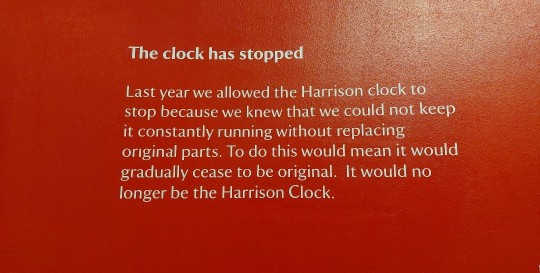#its easy and we love talkibg about our jobs
Explore tagged Tumblr posts
Text
Oh look its my tags.
It's actually a phenomenon you see often in museums (hence my own research into it) that when it comes to conservation and restoration (and museums in general) people tend to have very black and white views... when they don't know the details of an object.
One of my professors who has been a conservator for years actually ran a study once (which i am basing my own off of) where they had people vote for if a 17th century piano should be restored to be able to play it again or not. At first there was a lot of firm agreement for restoring it, with a lot of the same responses in the tags. "its meant to be played" "its a functional item" "ur just letting it rot"
The exhibit then went on to explain that to make the piano playable again, they would have to completely replace all of the mechanisms inside the piano, replace an entire leg to make it stable enough to sit at, multiple keys which had been worn down from decades of people playing them that held the history of the people who loved it would need to be removed and replaced. That to be able to use the piano again, it would essentially need to become a entirely new one.
The end of the exhibit then encouraged people to once again vote on if the piano should be restored to being functional again and the answers saw a dramatic shift. There were some who were still staunchly for or against, of course, but having the history of the object laid out for them tended to help a lot of people realize that theres maybe a bit more to an object in a museum than if it still works or not.
Functional objects are meant to be functional, yes, but there is so much more nuance when it comes to historical objects. A violin in a collection might not be able to be able to played anymore, but the frayed bow, worn frets, and battered strings show the love and history that object contains. A clock might not tick anymore, but the mechanisms inside still have the fingerprints of the creators what were smudged on them with grease and oil when they were hand carved and placed inside. These decisions are not made lightly, and the historic value of an object and its materials should always be weighed against the value of it still fuctioning, especially in regards to objects like clocks which can easily have replicas made.
Museums are meant to keep the records of history. To keep objects around for future generations to study and learn and grow from. That is why we are constantly debating these ethical considerations. Its why we carefully weigh the concept of keeping something functioning vs keeping the original pieces. The concept of replicas vs replacements. We have to weigh the cost of keeping something running as well, as museums, despite what people seem to think (with the exception of maybe a dozen or so big musuems), are chronically underfunded, especially when it comes to collections care. There is no right or wrong answer, no way we can make everyone in this scenario happy. All we can do is try our best to preserve the history of an object in the best ways we can so that it can be around for others to learn from in the future.

Due to budgetary constraints we do not have the resources for any Ship of Theseus bullshit and we have chosen death over continuity.
#musuems can never win when it comes to these arguments#there will always be people tellings us we are wrong#there will always be people with strong black and white opinions when it comes to museums and their collections#to those people i ask please go to your local museum#talk to a curator a collections specialist a conservator#its easy and we love talkibg about our jobs#but please just take the time to understand that just like history the care of ovjects is not and will never be black and white#once again im sorry for co opting and ranting on ur post op#i just have very very strong opinions about museums and conservation and ethics and how people view them#i hope this made sense i have a headache forming feel free to ignore it if it doesnt sorry
30K notes
·
View notes